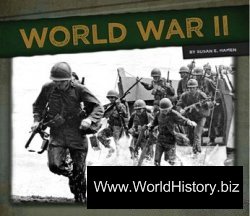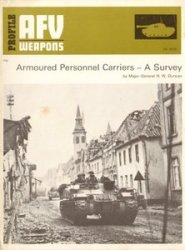Langle De Cary, Gen Fernand Louis Armand Marie de (18491927). Fr. Commanded Fourth Army in battles of Ardennes, August 1914, withdrawing after suffering heavy losses, and Marne, September 1914, making a determined stand at Vitry-le-Frangois. Commanded jointly with Petain in the costly offensive of Second Champagne, September-November 1915; in December 1915 was promoted to command Centre Group of Armies. In March 1916, after being briefly engaged at Verdun, he was retired as over-age.
Langley. America’s first aircraft carrier, converted from the fleet collier Jupiter in 1922. Converted to seaplane tender in 1937 and sunk by Japanese bombers off Java, early 1942. Name revived for Independence-cdiQQ carrier which fought at Philippine Sea and Leyte Gulf.
Lang Son. French armed forces abandoned Lang Son, the capital of Vietnam’s Lang Son province located 9 miles (14km) from the Chinese border, on October 18
1950. In near panic the French left behind 1,300 tons of ammunition, food, equipment and artillery for capture by the Vietnamese communists. Lang Son was also a major target of China’s “punitive strike” against Vietnam during February-March 1979. The Chinese Army held the city for several days in early March and dynamited many buildings. See also BORDER WAR, VIETNAM.
Lanphier, Maj Thomas G
(b. l915). US. usAAF P-38 pilot widely credited with having destroyed the Japanese “Betty” bomber in which Adm Isoroku Yamamoto died near Kahili, Bougainville, on April 18 1943. Some evidence suggests, however, that Lt Rex T Barber, rather than Lanphier, may have shot down Yamamoto’s aircraft.
Lanrezac, Gen Charles Louis Marie (1852-1925). Fr. In August 1914, Lanrezac, commanding the French Fifth Army, was one of the very few Allied commanders to apprehend the full implications of the German dispositions. Fearing envelopment by an advance through Belgium, he persuaded
Joffre to allow him to deploy in the Sambre-Meuse angle rather than attack into the Ardennes. On August 22-23, while the bee, on his left, were engaged at Mons, he met the German Second and Third Armies at Charleroi. Unfortunately, Lanrezac’s tactical skills did not match his strategic percipi-ence: Fifth Army was severely mauled and its withdrawal left the BEF unsupported. Lanrezac earned Joffre’s disfavour both for his hasty retreat and for his poor cooperation with the bef: the sharp-tongued Lanrezac and the mercurial British commander, French, were here equally at fault. Lanrezac temporarily checked the Germans at Guise on August 29, but the major credit went to his flamboyant I Corps’ commander, Francbet d’Esperey, in whose favour he relinquished Fifth Army on September 3. RO’N.
Lansdale, Maj Gen Edward G
(b. l908). US. His involvement in Vietnam began in 1954—56, when President Eisenhower assigned him to Saigon to help consolidate the regime of Ngo Dinh Diem. To coup-minded army officers and leaders of religious sects alike, Lansdale offered bribes in return for acceptance of the Diem regime. He also coordinated the cia’s psychological and sabotage campaign against North Vietnam. Lansdale returned to Vietnam in 1965-68 as special assistant to the US ambassador. His taste for clandestine activities and his role in designing unconventional counterinsurgency programmes made him a controversial figure. WST.
Laos, wars since independence.
Mountainous, sparsely populated (3.6 million in 1983) and landlocked, Laos is inevitably embroiled in the wars of Vietnam. During the first Indochina War (1946—54) the French treated Laos along with Cambodia and Vietnam as one part of a single unit. The Vietnamese communists, who needed secure bases in the mountains anyway, responded by operating in Laotian territory and organizing the Laotian communist Party. Commonly known as the Pathet Lao, the Laotian communists joined a coalition Royal Lao Government in 1957, but a US-supported rightist coup and intervention by Thai troops ended that experiment. From September 1960, when Pathet Lao troops and Vietnamese “volunteers” evicted the Royal Lao Army from Sam Neua province until 1975, except for another brief coalition government in 1962, Laos was at war.
The Pathet Lao were solidly backed by tbe North Vietnamese, who began building the Ho Chi Minh Trail through Laotian territory in 1959. The Royal Lao Government enjoyed the support of the United States. The cia separately supplied an army of 25,000 men composed largely of the H’mong minority to fight the Pathet Lao and harass the North Vietnamese. The US began providing aerial support to the Royal Lao Army (Operation “Barrel Roll”) in December 1963. Sustained bombing of the Trail began in April 1965 (Operation “Steel Tiger”) and ended with the signing of a peace agreement on February 21 1973. In that bombing, US planes dropped 2,092,000 tons of bombs, two-thirds of a ton for every Lao citizen. A coalition government established on April 5 1974 in accordance with the peace agreement came apart as the Pathet Lao staged demonstrations and seized government offices following the communist victory in Vietnam. On December 3 1975, the Pathet Lao abolished the monarchy and proclaimed a People’s Democratic Republic. WST.
La Pallice. Port near La Rochelle, west coast of France. Used by the Germans as a U-boat base from
1940-44.
Laser-guided weapons. Weapons which home on the reflected infrared radiation of a laser designator shone on to the target by a ground observer or aircraft. The bomb, missile or shell has only to be dropped into the “basket” of reflected energy and it then homes automatically with great precision on to the target as long as the designator remains locked on. The best known laser-guided weapons are the American Paveway family of bombs which proved very effective in the Vietnam War during the 1970s.
Laser weapons see directed energy WEAPONS (dew).




 World History
World History









